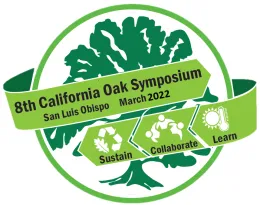#42

Response of Post-wildfire California Black Oak Sprout-clumps to Crown Modification; Early Results
Ethan Hammett, Pacific Southwest Research Station, 3644 Avtech Parkway, Redding CA 96002; (530) 739-5270; ethanjhammett@outlook.com
Martin Ritchie, Pacific Southwest Research Station
Pascal Berrill, Humboldt State University
Jonathan W. Long, Pacific Southwest Research Station
California black oak is commonly found in many forested areas in California and Oregon. The species is susceptible to top kill by moderate and high severity fire but typically sprouts vigorously from latent buds in the root collar. The tree then assumes a shrub form for some time while, gradually, self-thinning within the sprout-clump takes place. While black oak is highly valued for wildlife foraging and nesting, during the time while the individual exhibits a shrub form this value is diminished. For example, acorn production and opportunities for nesting habitat are more associated with mature trees than with young sprouting individuals.
We studied the prospect for accelerating the transition to tree form by selecting individual sprout-clumps to receive one of three treatments: remove all but a single stem, remove all but three stems, and untreated control. In year 2017 ten fires in areas supporting black oak, with one site each, were selected in northern California with latitudes ranging from 38.43° to 41.23°, ranging from 3-16 years since disturbance at the time of the treatment. In year 2018 we installed three additional units within the 2004 Power Fire (latitude 38.48°-38.49°). We observed pre-treatment, immediate post-treatment, and one-year post-treatment sprout-clump characteristics, including crown dimensions, 3 dominant stem diameters, count of stems at breast height, degree of resprouting post-treatment, and mast production. In addition, we observed overstory and understory competing woody vegetation. After some individual and site losses we have observations for 201 trees with pre-treatment and immediate post-treatment characteristics, 185 one-year and 160 three-year post-treatment characteristics.
After three years sprout-clumps reduced to one stem had a vigorous sprout response resulting in an average recruitment of 4.3 stems at breast height. In contrast the second treatment retaining 3 stems only saw an average recruitment of 0.2 stems at breast height. While controls on average self-thinned by 1.5 stems at breast height. Thus, it appears that reducing to a single stem will promote further sprouting within black oak, while with three stems this undesirable outcome is reduced.
Three-year post-treatment height and basal area growth of the largest stem appeared to be unaffected by treatment. Thus, in the short term, there is no observable treatment benefit to tree increment. Nor is there any evidence of a growth suppressive effect from loss of leaf area. While we did not estimate effects of treatment on leaf area directly, we did observe a loss of crown volume (mean of 16.9 m3) in trees treated to retain only three stems. It is possible there is a delayed effect on increment due to time needed to recover leaf area after treatment. Longer-term effects will require future remeasurement of the plots.
